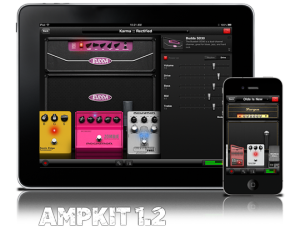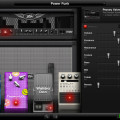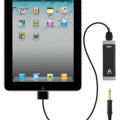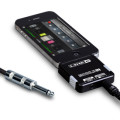AmpKit – my favorite amp modeller on the iPhone and iPad – has just been released in a new version, a completely free upgrade. If I would blog about each update on the app store I wouldn’t be doing anything else, but this is no regular update.
Here’s the list of features (taken directly from Agile Partners’ web site):
- Dual-stage Amp Simulation: Doubles the simulation fidelity of all AmpKit amps on newer iOS devices including iPhone 4, iPad 1 & 2, and 4th generation iPod touch.
- Convolution-based Cabinet Simulation: Advanced technology (used in high-end desktop amp simulation software) for highly accurate cabinet simulations that produce even better, more realistic tone and dynamics.
- Adaptive Input Compensation: : Intelligently restores the bass frequencies lost through the headset circuitry on various iOS devices. The result: an amazing increase in the fidelity of the incoming guitar signal, and much richer amplified tone, regardless of amp and playing style.
- Solo & Mix Output Shaping: Toggle between Solo mode, which pumps up bass frequencies for the best possible tone when practicing and playing for fun, and Mix mode, which gives a brighter tone when you want to mix with other instruments for recording or playing with a band.
- Next-generation Noise Gate: Even better control of your favorite high-gain amps and pedals.
- Multitasking Support / Background Audio: AmpKit can now keep operating and produce audio when running in the background – perfect for looking at scrolling tab notation in TabToolkit while continuing to play using your favorite AmpKit setup.
- Recording Session Mix Down: You can now mix a wet guitar recording with its backing track. Repeat the process to mix in additional guitar tracks.
- Effects Only Mode: In AmpKit 1.2, you can turn off amp and cabinet modeling, and create setups with just effects pedals. Use AmpKit as an effects processor connected to your physical guitar or bass amp.
- Effects After The Cab: In addition to positioning effects such as delay and reverb after the amp, you can now also position effects after the cabinet – total control to place effects virtually anywhere, including places where physical effects pedals could never go.
- Feedback Protection: AmpKit offers the full-strength, high-gain amps and pedals demanded by metal and other high-gain enthusiasts. Just as with real amplifiers, high-gain play in AmpKit brings the potential of feedback, especially when using guitar interfaces that, unlike AmpKit LiNK, have a high level of crosstalk. In AmpKit 1.2, we’ve added Feedback Protection, which detects most feedback and automatically brings it under control.
If that wasn’t enough, new amp models from Budda, Rocktron and Fargen are added as in-app purchases, and better signal processing is always welcome of course.
For me, the best new features are the background audio support (I often do just the above – switch to TabToolkit) and the mixdown feature.
I have quite a bit of searches on latency landing here, so I’ll take the opportunity to adress that as well. I’ve never experienced any kind of latency issues in AmpKit, regardless of hardware interface used (iRig/Ampkit Link/Apogee Jam). During the short period I used Amplitube I didn’t have any latency issues either. It’s quite impressive that these iOS apps work so well, when getting a good low-latency setup on a common PC can be a real hassle. Well done developers!





